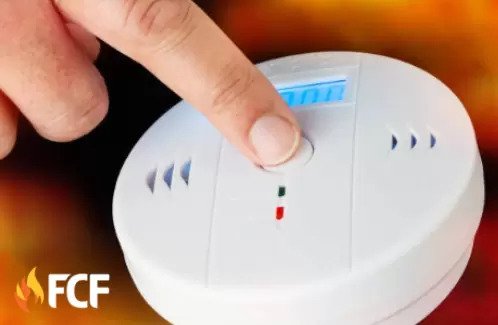Smoke alarms are designed to detect smoke and fire before it spreads throughout the house. The earliest types of smoke alarms were wired with batteries, but today most are powered by a 9 volt battery or a 120volt AC adaptor.
All smoke alarms have two major components: an alarm and a sensor. The alarm is the part that makes noise so you can hear it. The sensor detects smoke and sends an electronic signal to the alarm when it is triggered. The alarm sounds when this electronic signal reaches it from the sensor. It can be hardwired or battery operated.

The two most common types of sensors are photoelectric and ionization type sensors. Photoelectric sensors detect heat changes and ionization sensors detect particles consisting of soot or dust which form when there is incomplete combustion of a flammable material such as wood, oil or gas.
The smoke alarm is the first line of defense against a fire. When it detects smoke, it alerts you to get out of the house immediately. However, does everyone know how a smoke alarm works?
In this article, we’ll explain how a smoke alarm works, including what makes it go off, why some people think they don’t work and other important information to keep in mind when using them.
How Does a Smoke Detector Work?
A smoke detector is an electronic device that monitors the air for particles of combustion (smoke particles). If a certain level of smoke particles are detected by the sensor inside the unit, an alarm will sound to alert you that there may be danger nearby.
How Does A Smoke Detector Know To Go Off?
When there’s no change in temperature or humidity inside your home, there’s no reason for a smoke detector to go off — unless there’s a fire! Even then, many people assume that their smoke detector doesn’t work because they never hear it go off in their home. That’s not because it isn’t working properly; it’s because they don’t know what signs to look for when testing their detectors!
smoke detector or smoke alarm is a device that senses smoke, typically as an indicator of fire. Smoke detectors are designed to detect visible or invisible particles of combustion. The most common type of smoke detector, the ionization smoke detector, detects the ionization of air caused by the high temperature of fire.
Modern smoke detectors have a built-in heat-sensitive electronic sensor that activates an alarm when it senses a rise in temperature due to fire. This process is known as thermionic sensing. They may also contain optical sensors which detect visible light from a flame in order to distinguish between false alarms (such as steam) and true alarms (such as a real fire), though this is not always reliable. Some smoke detectors use both types of sensors in one unit.
The first documented use of an electric alarm for fire was made in 1805 by British scientist Sir William Congreve, who invented his “Congreve Rockets”, which were sent up during the Battle of Copenhagen (1807). These rockets were designed to explode in midair and release balls of incandescent material that would produce a flash upon burning while falling back to Earth. The idea was that they could be used to illuminate enemy positions at night or be.
A smoke alarm is a device that detects smoke, typically as an indicator of fire. Smoke alarms are designed to notify people in the event of a fire. The sensors in the smoke alarm are either ionization or photoelectric, which means that they detect either ionizing or non-ionizing radiation. Both types are effective, but they do have different characteristics.
How Ionization Smoke Alarms Work
Ionization smoke alarms contain a small amount of radioactive material inside them. When this material is hit by particles in the air, it emits electrons at high speeds. These electrons create a current that causes an electrical charge between two wires and sets off an alarm in the event of a fire. The ionization technology is more sensitive than photoelectric, meaning it can detect smaller amounts of smoke; however, it can also be triggered by dust, steam or cooking fumes.


